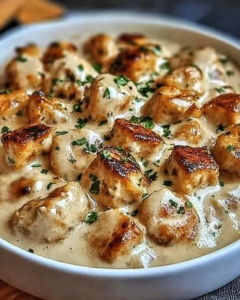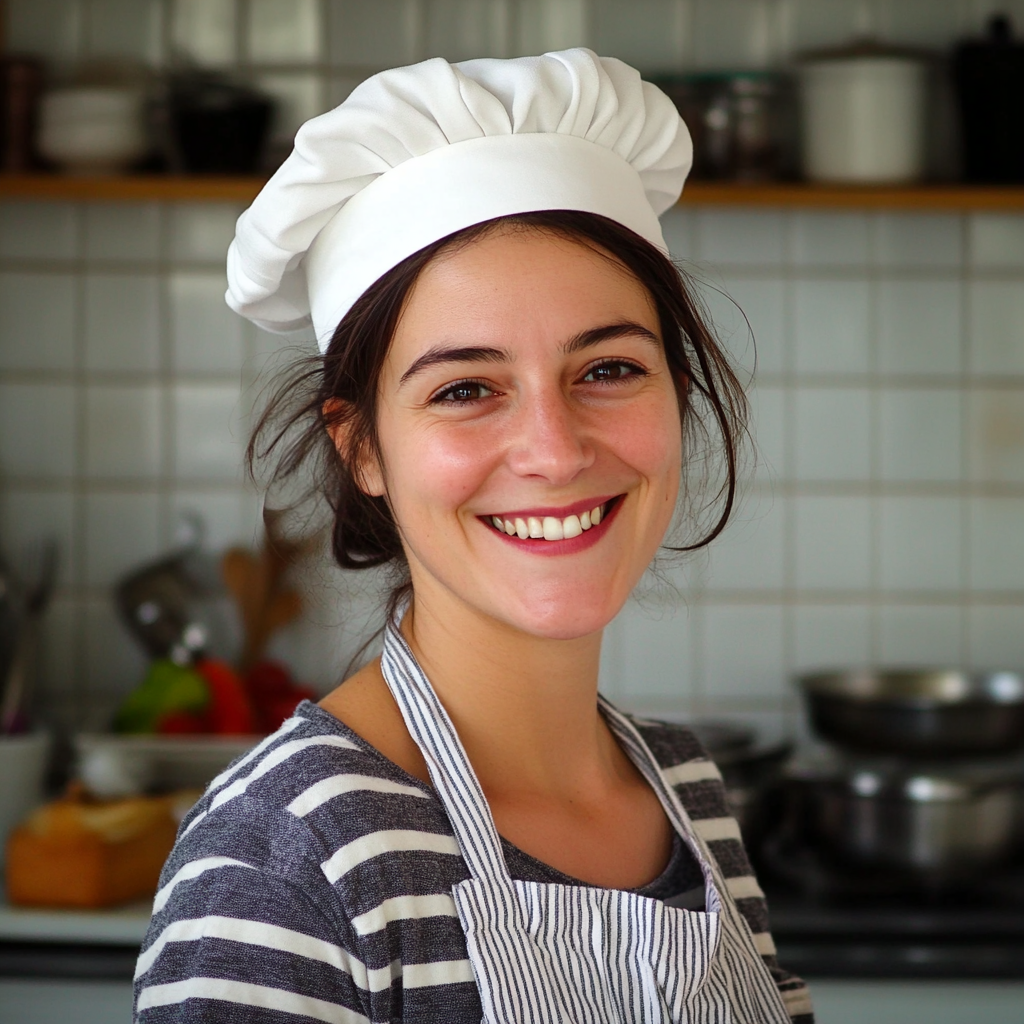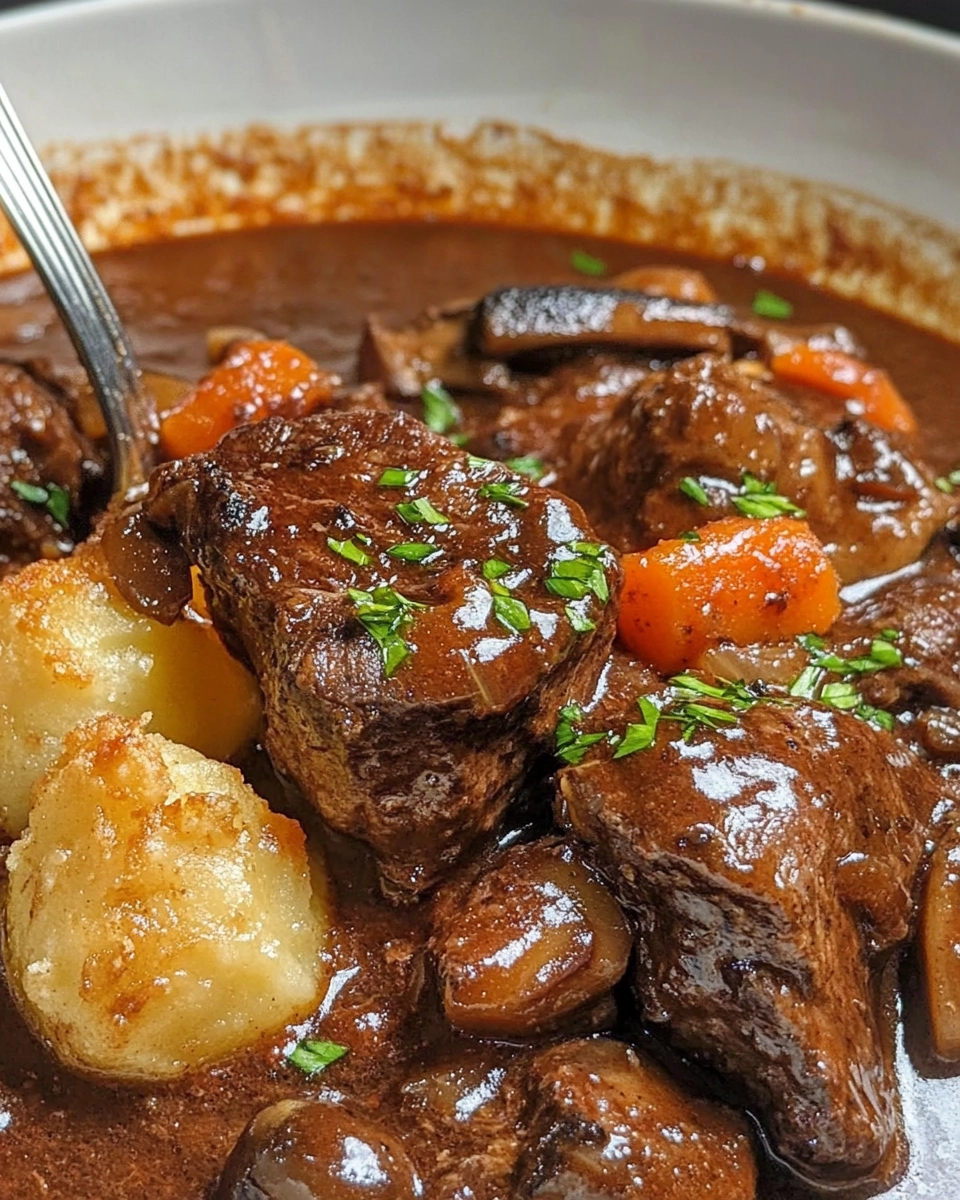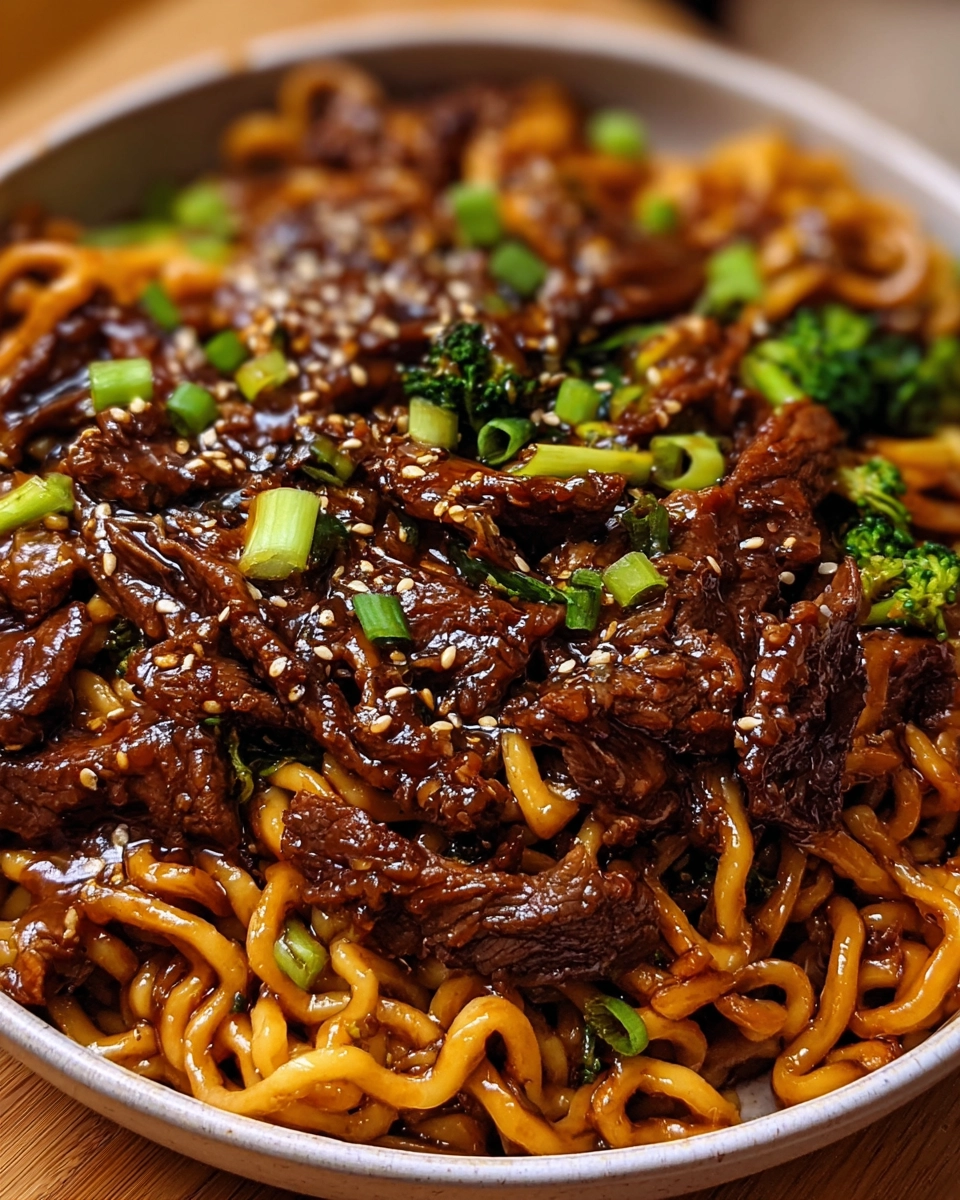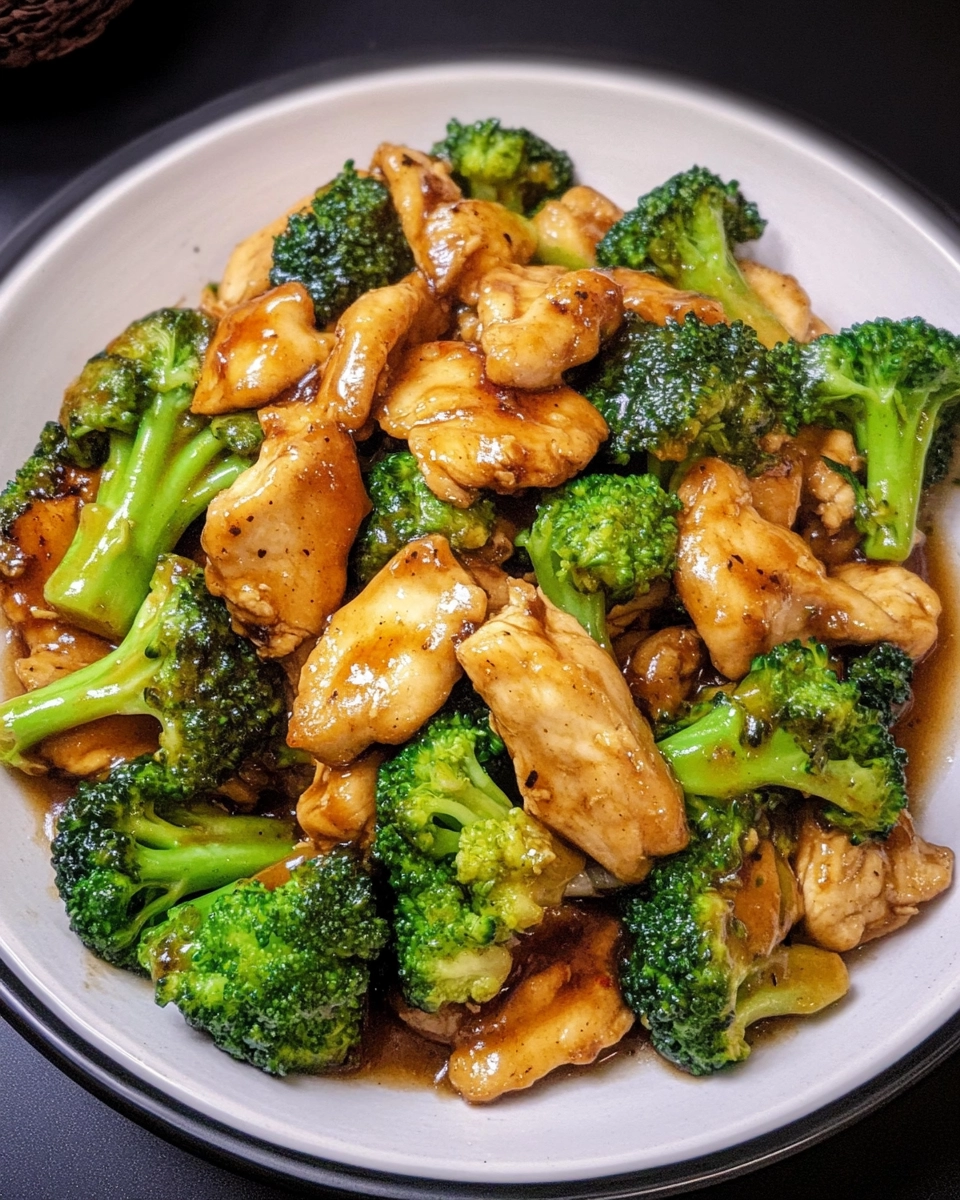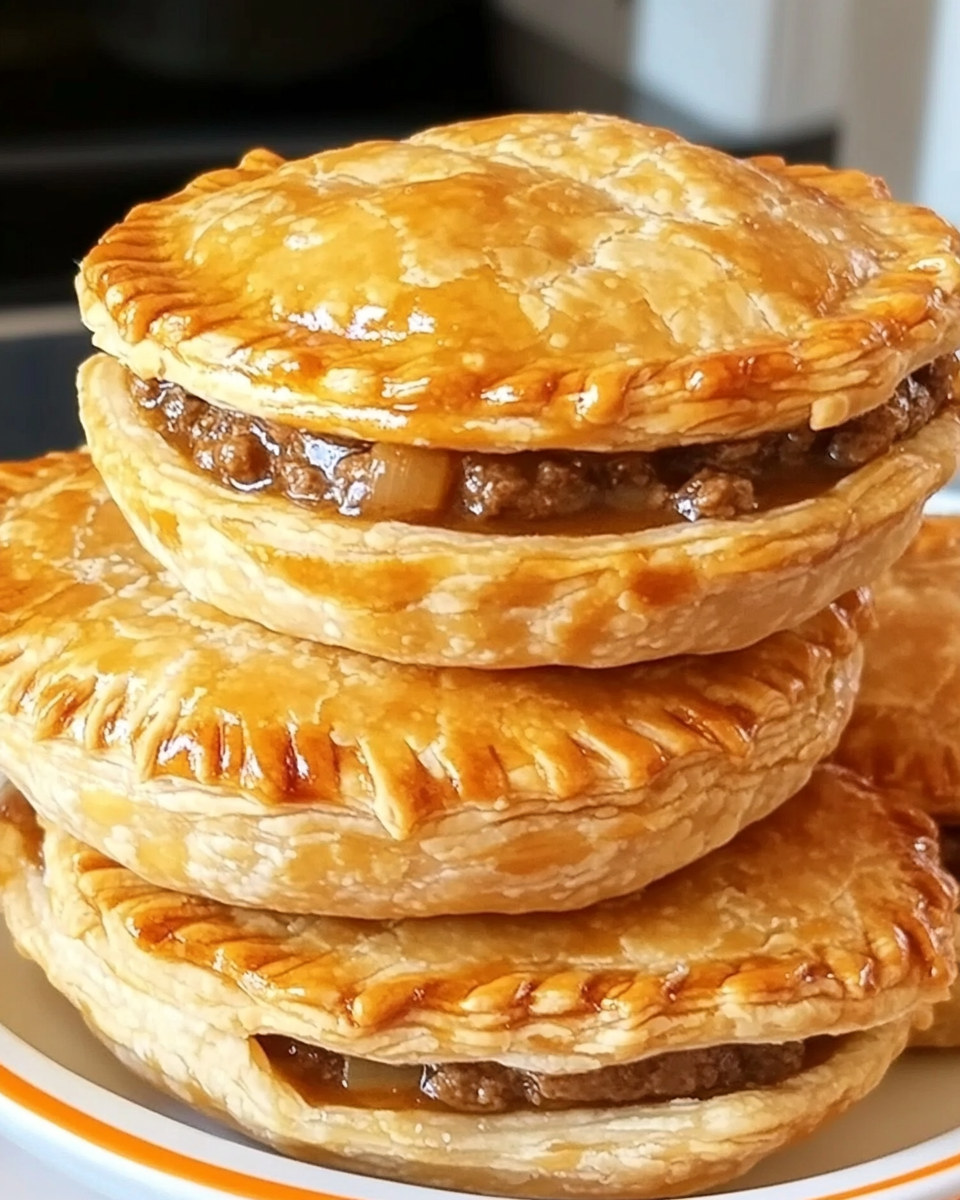From My Southern Kitchen to a Tuscan Table
Some recipes feel like home. Others feel like travel. And every once in a while, you find a dish like Tuscan beef casserole that does both. It brings together rich, slow-cooked flavors that comfort the soul while carrying you straight to the rolling hills and rustic kitchens of Italy.
I’m Maggie Rae Donovan. I’m a home cook living just outside of Asheville, North Carolina. I’ve spent the last 25 years cooking from the heart—no culinary school, no starched white coat, just me, a wooden spoon, and a deep love for feeding the people I care about.
My journey into food started young. I was just a little girl, perched on a chair next to my grandmother while she folded biscuit dough with magic in her fingers. Her kitchen smelled like stories and butter and everything good in the world. She taught me to cook with instinct and joy, not just measurements. Those early days left their mark, and I’ve carried them with me into every pot I’ve stirred since.
Life hasn’t always been neat or easy, but one thing I could always count on was the comfort of my own kitchen. It’s where I learned that a pot of stew can fix a bad day, that laughter rises like steam when folks gather around a good meal, and that a casserole isn’t just food—it’s love, layered and baked.
So when I discovered the beauty of Tuscan-style beef—braised low and slow with herbs, tomatoes, garlic, and good olive oil—I knew I had to make it my own. This Tuscan beef casserole is one of those “set it and forget it” meals that fills your home with the kind of smell that brings people to the table before you even call them.
Whether you’re feeding a crowd, planning a cozy Sunday dinner, or just looking for a new way to enjoy beef that’s hearty but not heavy, this recipe is for you.
Looking for another cozy classic? Try our Slow Cooker Chicken and Dumplings from Scratch for that same comfort-first feeling, Southern-style.
Let’s take a stroll through Tuscany, one bite at a time.
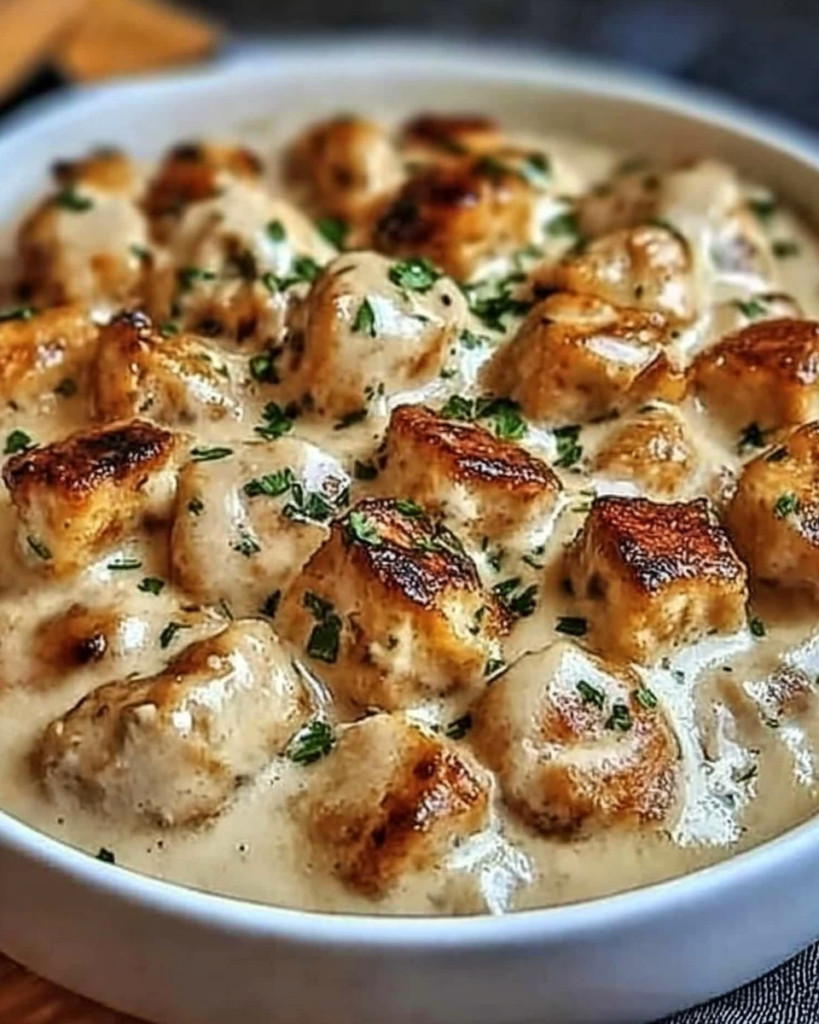
Table of Contents
PART 1: What Makes a Beef Casserole “Tuscan”?
Tuscan Cooking Is About Simplicity and Soul
If you’ve ever wandered through a Tuscan village or flipped through an old Italian cookbook, you’ll notice something right away—Tuscany doesn’t do complicated. It does real. Real ingredients. Real flavor. Real food that brings people together.
A Tuscan beef casserole is no exception. It’s not your average American-style casserole smothered in cheese and cream. This version is rustic, honest, and all about letting the ingredients shine. Tender chunks of beef. Crushed tomatoes. Garlic. Red wine. A handful of herbs. And time—plenty of time for everything to simmer, soften, and melt into one glorious dish.
What Is Tuscan Style Beef?
Tuscan-style beef refers to beef that’s been slow-cooked with Italian staples like rosemary, sage, garlic, onions, and tomatoes. It often includes a splash of red wine and is usually simmered low and slow until the meat is fork-tender and the sauce is rich with flavor.
In casserole form, all those classic Tuscan elements come together in one pot. It’s comfort food with old-world elegance—something that tastes like it’s been passed down for generations, even if you’re making it for the first time.
A Casserole Without the Cream
What sets Tuscan beef casserole apart is that it leans on olive oil, herbs, and acidity instead of dairy and starch. There’s no canned soup or heavy topping. Just layers of flavor built up the traditional way—through slow braising, aromatic vegetables, and a well-balanced sauce.
You might see white beans added for heartiness or a few carrots and celery for texture, but the focus always stays on the meat and the sauce. That’s the Tuscan way.
Regional Roots: The History Behind It
Tuscany is known for its cucina povera—“peasant cooking.” That means making the most out of what you have. So, tougher cuts of beef like chuck or brisket were slow-cooked for hours in wine and aromatics until tender. That tradition inspired what we now know as the Tuscan beef casserole—a dish that takes patience but rewards you tenfold.
Don’t miss our Homestyle Beef & Barley Soup with Vegetables if you’re craving another slow-simmered meal that’s all about flavor and warmth.
PART 2: Choosing the Right Cut of Beef for Tuscan Casserole
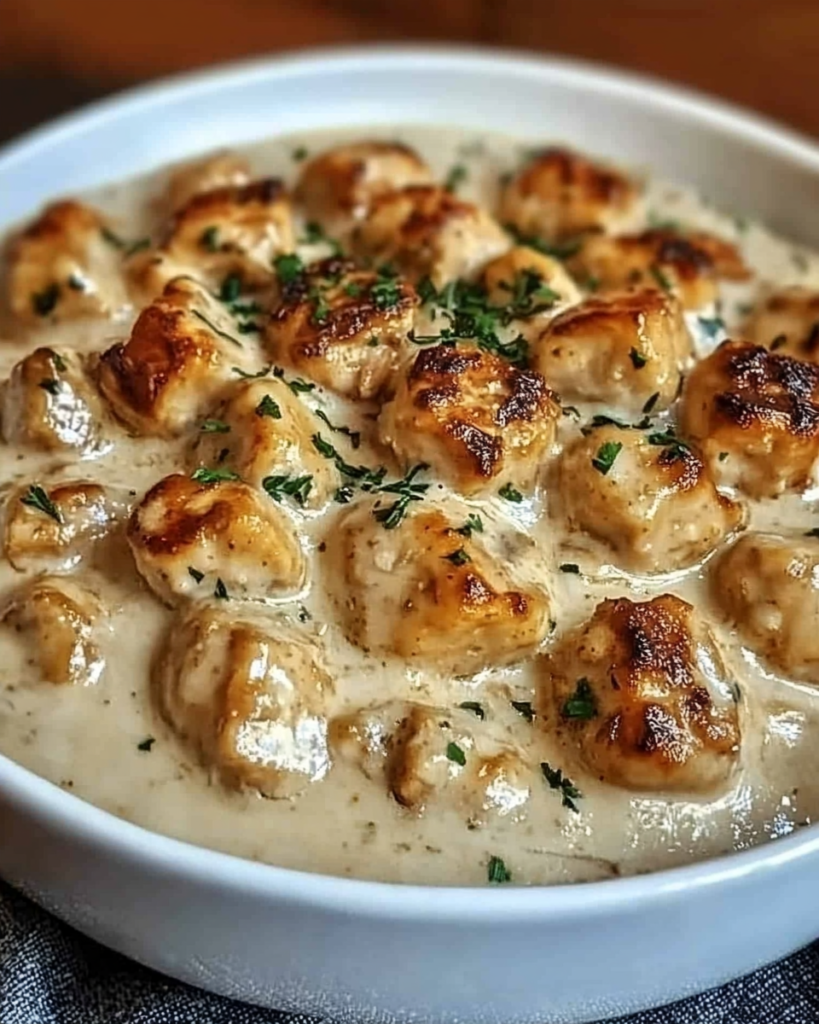
Start with the Right Beef, End with Melt-in-Your-Mouth Flavor
You can’t have a truly comforting Tuscan beef casserole without the right foundation: the beef. In Tuscany, the goal is simple—tender meat that breaks apart with a fork, full of deep flavor. That kind of texture and taste doesn’t come from just any cut. It comes from cuts that love to be cooked low and slow.
Which Part of Beef Is Best for Casserole?
The best cuts for casseroles are ones with connective tissue and marbling, which break down over time into melt-in-your-mouth tenderness. Here are the top picks for Tuscan-style beef casseroles:
- Chuck Roast – Budget-friendly and full of flavor. It’s the go-to for most slow-cooked beef dishes.
- Brisket – Slightly fattier, with a bold, beefy profile that shines in red wine sauces.
- Shin (Beef Shank) – Known for its richness and collagen, perfect for a rustic casserole.
- Short Ribs (Boneless or Bone-In) – A little luxurious, incredibly tender when slow-braised.
If you’re shopping in a U.S. grocery store, chuck roast is your best bet. It’s affordable, easy to find, and beautifully suited to the Tuscan casserole method.
Trim, Cube, and Season Smartly
Before cooking, trim off any large, tough sinew or excess fat, but leave some marbling intact—that’s where flavor lives. Cut the beef into roughly 2-inch cubes. Too small, and the meat will dry out. Too large, and it won’t cook evenly.
Generously season your beef cubes with salt and black pepper before browning. This step helps lock in flavor and create the base of your sauce.
The Browning Step You Shouldn’t Skip
Don’t rush this. Browning the beef in olive oil before braising gives it a gorgeous crust and builds a rich foundation of flavor. The caramelized bits left behind in the pot (called fond) are pure gold for your red wine and tomato base.
Check out our Slow Cooked Garlic Balsamic Beef Roast for another hearty recipe that gets the most from the chuck cut.
PART 3: Key Ingredients in a Traditional Tuscan Beef Casserole
A Symphony of Simple Ingredients
The magic of a true Tuscan beef casserole isn’t in fancy extras or heavy sauces. It’s in a few well-chosen ingredients that cook low and slow, building layer upon layer of flavor. Each addition serves a purpose—bringing balance, body, or brightness to the dish.
Let’s break down the stars of the casserole and what makes them shine.
The Essentials of Tuscan Flavor
1. Olive Oil
Tuscan cooking always begins with good olive oil. It’s used for browning the beef and sautéing the aromatics, and it adds that signature earthy richness you can’t replicate with butter.
2. Garlic & Onions
Lots of garlic and at least one or two yellow onions create the aromatic foundation. They melt into the sauce and become part of the dish’s soul.
3. Tomatoes
Crushed or diced canned tomatoes add acidity and depth. For authenticity, go with San Marzano if possible—they’re slightly sweet, low in seeds, and give that traditional Italian flavor.
4. Red Wine
A dry red wine like Chianti, Merlot, or Sangiovese brings richness and depth. It’s not just for sipping—wine deglazes the pan, lifts the fond, and helps tenderize the meat during the braise.
5. Fresh Herbs
Tuscany favors rosemary, thyme, sage, and bay leaves. You don’t need to overdo it—a few sprigs tied into a bundle (a bouquet garni) will infuse the casserole with warmth and complexity.
Supporting Cast That Rounds It Out
6. Carrots & Celery
These vegetables are part of the soffritto—a classic Italian base. They add sweetness and body to the sauce without overpowering the beef.
7. Beef Broth
Use a low-sodium beef broth to stretch your sauce without watering down flavor. It keeps everything moist during the long cook.
8. White Beans (Optional)
Tuscans love adding cannellini beans to their stews. They soak up flavor, add protein, and stretch the meal beautifully.
A Simple Ingredient List That Delivers Big
Here’s a quick overview of what you’ll need for a family-style Tuscan beef casserole:
| Ingredient | Amount | Purpose |
|---|---|---|
| Beef chuck or brisket | 2–3 pounds | Main protein, slow-braising meat |
| Olive oil | 2–3 tablespoons | Searing, sautéing, base flavor |
| Garlic | 4–6 cloves | Aromatic and bold |
| Yellow onions | 1–2 large | Sweetness and body |
| Crushed tomatoes | 1 can (14–15 oz) | Base of the sauce |
| Carrots & celery | 1 cup each, diced | Texture and background flavor |
| Red wine | 1–1.5 cups | Acid, depth, and richness |
| Fresh rosemary & thyme | 2–3 sprigs each | Herbal warmth |
| Bay leaves | 1–2 | Subtle flavor depth |
| Beef broth | 1.5–2 cups | Moisture and slow cooking liquid |
| Cannellini beans (opt.) | 1 can, drained | Hearty and traditional |
Don’t miss our Tuscan White Bean & Kale Soup for another simple, soulful recipe straight from the Italian countryside.
PART 4: Step-by-Step – How to Make the Best Tuscan Beef Casserole at Home

Classic Comfort, One Simmer at a Time
The beauty of a Tuscan beef casserole is how the ingredients do most of the work. Once everything’s in the pot, all you need is a little time and a little patience. This is slow food at its best—built on tradition, layered with flavor, and meant to be shared.
Let’s walk through it together.
Step 1: Prep Your Ingredients
Start by cutting your beef into 2-inch chunks. Season them well with salt and pepper. Dice your onions, carrots, and celery. Crush or finely mince your garlic. Drain your beans if using.
Pro Tip: Get everything ready before you start cooking. This dish comes together in stages, and it’s much easier when your ingredients are prepped.
Step 2: Brown the Beef
In a heavy-bottomed Dutch oven or deep casserole pan, heat 2 tablespoons of olive oil over medium-high heat. Add the beef in batches (don’t overcrowd) and brown on all sides. This builds flavor and creates a savory crust.
Once browned, remove the beef and set aside.
Step 3: Sauté the Aromatics
Reduce the heat to medium. Add a little more olive oil if needed, then sauté your onions, carrots, and celery until softened—about 8–10 minutes. Stir in the garlic and cook for 1 more minute until fragrant.
Scrape the bottom of the pot to lift the browned bits—this is flavor gold.
Step 4: Build the Base
Stir in your crushed tomatoes and cook for 2 minutes to remove any canned taste. Add 1 to 1.5 cups of red wine and let it simmer for 5 minutes to reduce slightly.
Return the browned beef to the pot and add 2 cups of beef broth. Toss in your herb bundle (rosemary, thyme, bay leaves). If you’re using cannellini beans, stir them in now.
Step 5: Simmer Low and Slow
Cover the pot and simmer over low heat on the stovetop for 2.5 to 3 hours, or place it in a preheated oven at 325°F (163°C). Stir occasionally and check the liquid level—add more broth if needed.
By the time it’s done, your beef will be fork-tender, the sauce thickened, and your kitchen filled with that rich, herbal aroma that makes you feel hugged.
Step 6: Serve with Love
Remove the herb bundle and taste the sauce. Add salt and pepper as needed. Serve your Tuscan beef casserole over creamy polenta, mashed potatoes, crusty bread, or even pasta.
Garnish with fresh parsley or a drizzle of olive oil if you’re feeling fancy.
Don’t miss our Creamy Parmesan Polenta—the perfect companion for soaking up every drop of that beautiful tomato-wine sauce.
PART 6: How to Store, Freeze & Reheat Tuscan Beef Casserole
The Kind of Dish That Gets Even Better Tomorrow
One of the best things about Tuscan beef casserole is that the flavors deepen overnight. It’s one of those rare recipes that actually tastes better the next day, making it perfect for meal prepping, freezing, or serving as leftovers.
How to Store Leftovers (Short-Term)
Once your casserole has cooled to room temperature:
- Refrigerate: Transfer to an airtight container or leave it in the Dutch oven with a tight-fitting lid. Store for up to 4 days.
- Keep the meat fully submerged in the sauce to prevent drying out.
Tip: Label your container with the date to keep things organized in the fridge.
How to Freeze Tuscan Beef Casserole
This dish freezes beautifully. Whether you’re freezing a full batch or saving just a few portions:
- Freeze in meal-sized containers or heavy-duty freezer bags.
- Let the casserole cool completely before freezing.
- Freeze for up to 3 months.
For best results, store meat and sauce together, and press out as much air as possible from bags.
Reheating for That Just-Cooked Taste
To keep that tender texture and rich flavor intact, reheat gently:
Stovetop (Best Method)
- Place casserole in a pot over medium-low heat.
- Add a splash of broth or water to loosen the sauce if it’s thickened.
- Cover and simmer, stirring occasionally, until hot (about 10–15 minutes).
Oven
- Preheat to 325°F (163°C).
- Place casserole in a covered baking dish.
- Heat for 25–30 minutes, until heated through.
Microwave (For Individual Servings)
- Use a microwave-safe bowl with a loose-fitting lid.
- Heat on medium power in 2-minute intervals, stirring between rounds.
- Let rest 1–2 minutes before serving.
Pro Tip: Reheat Only What You’ll Eat
Every time you reheat the full batch, it breaks down a little more. To keep the best texture, reheat small portions as needed—especially if you’re spreading this out over a few meals.
Don’t miss our Meal Prep Guide for One-Pot Recipes for more ideas on planning, storing, and serving with ease.
PART 7: How to Serve Tuscan Beef Casserole – Pairings, Sides & Presentation Tips
Hearty, Rustic, and Ready to Impress
A good Tuscan beef casserole is deeply satisfying all on its own, but the right sides and thoughtful presentation can turn a simple meal into something special. Whether you’re hosting friends or just feeding your family on a chilly evening, this dish deserves a proper send-off from pot to plate.
What to Serve with Tuscan Beef Casserole
1. Creamy Polenta
Silky, warm polenta makes the perfect base to soak up every drop of that tomato-red wine sauce. Add a little parmesan and butter to finish it off.
2. Crusty Bread
Go classic with a rustic Italian loaf, ciabatta, or sourdough. Toasted with olive oil and garlic, bread becomes your best tool for sauce-scooping.
3. Buttered Noodles or Pappardelle
Wide, eggy noodles like pappardelle bring the feel of a Tuscan trattoria right to your table. Keep them simple with just olive oil and herbs.
4. Mashed Potatoes
If you want extra comfort, mashed potatoes are a creamy, cozy contrast to the bold beef and tomato sauce.
5. Simple Greens
Balance the richness of the casserole with something light:
- Arugula salad with lemon vinaigrette
- Steamed green beans or broccolini
- Roasted Brussels sprouts with balsamic glaze
Wine Pairings That Sing
Tuscan cooking was made for red wine, and this dish is no exception. Here’s what pairs beautifully with Tuscan beef casserole:
| Wine Type | Flavor Notes | Why It Works |
|---|---|---|
| Chianti Classico | Herbal, cherry, earthy | A classic Tuscan pairing |
| Barbera | Fruity with bright acidity | Cuts through the richness of the beef |
| Zinfandel | Bold, spicy, round | Highlights the garlic and herbs |
| Cabernet Sauvignon | Deep, tannic, structured | Enhances the beef’s bold flavor |
Presentation Tips for a Cozy, Rustic Meal
- Serve directly from the Dutch oven at the table for a warm, rustic look.
- Add a sprig of fresh rosemary or thyme on top for color and aroma.
- Drizzle with a little finishing olive oil just before serving.
- Use wide, shallow bowls to hold the sauce and make scooping easier.
Discover great ideas like our Slow Roasted Garlic Potatoes with Herbs if you want a side dish that pairs beautifully with beef casseroles and roasts.
PART 8: Creative Ways to Use Leftovers – Reinventing Tuscan Beef Casserole
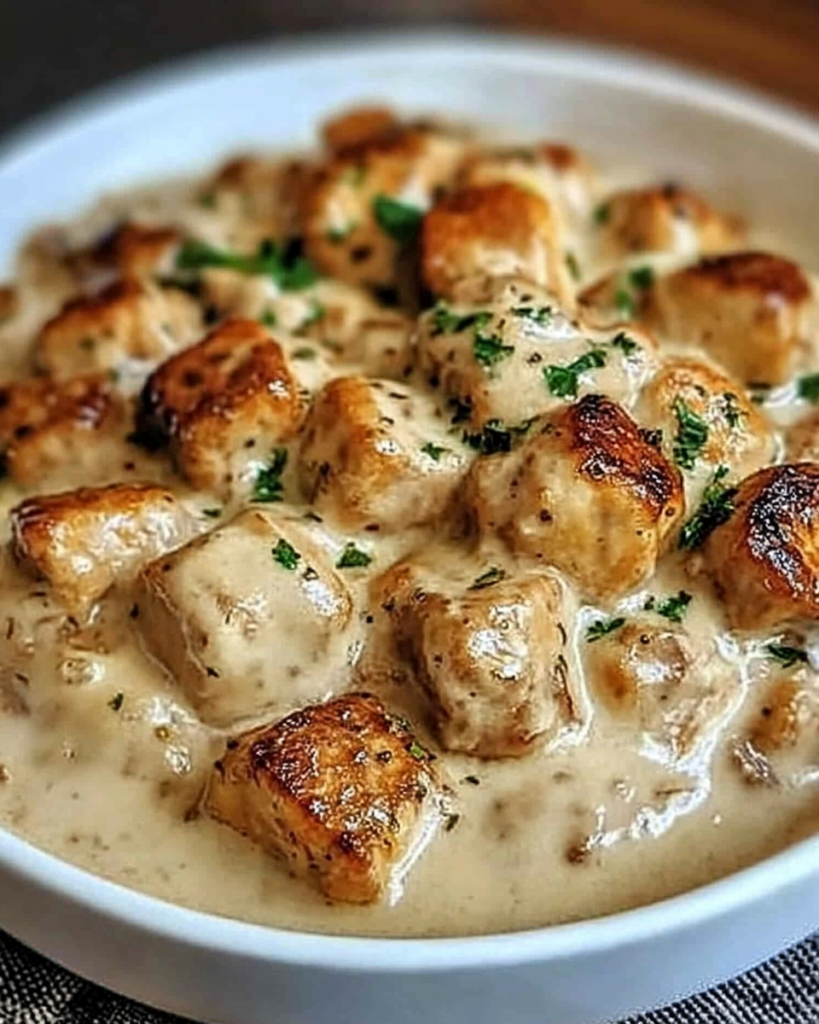
Waste Less, Eat Well
If you’re lucky enough to have leftovers of Tuscan beef casserole, you’re already halfway to another amazing meal. The deep, rich flavors of the red wine, garlic, tomatoes, and herbs continue to develop overnight, making day-two dishes even more irresistible.
Here’s how to turn yesterday’s casserole into something fresh, satisfying, and completely new.
1. Tuscan Beef Ragu Pasta
Shred the leftover beef and simmer it gently in the remaining sauce. Toss with tagliatelle or rigatoni and top with grated Parmigiano-Reggiano. Add a splash of reserved pasta water to help the sauce cling.
Bonus tip: Stir in a dollop of ricotta or mascarpone for creaminess.
2. Stuffed Bell Peppers
Hollow out a few bell peppers, fill them with reheated Tuscan beef, top with breadcrumbs or cheese (if desired), and bake at 375°F for 20–25 minutes.
This twist turns casserole into a one-pepper meal.
3. Rustic Beef & Bean Soup
Add beef broth and a handful of chopped kale or spinach to leftover casserole. Simmer until greens are soft, and you’ve got a rich, Tuscan-inspired soup.
Toss in more white beans if you’d like to bulk it up.
4. Italian Beef Sandwiches
Pile warm, shredded Tuscan beef on crusty hoagie rolls or ciabatta. Add roasted peppers, fresh basil, and a drizzle of olive oil or melted provolone for an unforgettable sandwich.
Wrap it up for a hearty lunch or serve with chips for an easy dinner.
5. Tuscan Shepherd’s Pie
Layer the leftover beef in a baking dish, top with mashed potatoes, and bake at 400°F for 20 minutes until the top is golden. It’s rustic, comforting, and puts a new spin on two classics.
Meal-Planning Made Easy
You can freeze leftovers in individual portions and thaw them later to create any of the ideas above. It’s a smart way to keep dinner interesting and avoid mealtime fatigue.
Looking for inspiration? Try our Italian White Bean & Sausage Skillet to keep the Mediterranean flavors going strong throughout the week.
PART 9: Conclusion – Why Tuscan Beef Casserole Deserves a Spot in Every Home Cook’s Recipe Box
Some dishes come and go. But a recipe like Tuscan beef casserole? It stays with you.
It’s more than just a meal. It’s comfort. It’s tradition. It’s the kind of food that fills your kitchen with the scent of garlic, herbs, and red wine—and brings people to the table long before you even say “Dinner’s ready.”
What makes it special isn’t just the tender beef or the slow-simmered sauce. It’s the why behind it. It’s the story of humble Tuscan kitchens, where simple ingredients are transformed into something extraordinary through patience, love, and a little olive oil. It’s the way you can make it once, then turn leftovers into three more meals without breaking a sweat. It’s the fact that you don’t need fancy ingredients or expert skills—just a pot, some time, and the joy of cooking for people you care about.
So whether you’re new to the dish or it’s been years since your last casserole, let this one become a part of your own story. From Sunday dinner to weeknight comfort, Tuscan beef casserole delivers soul in every bite.
Don’t miss our Savory One-Pot Italian Chicken & Lentils for another rustic dish that’s packed with slow-cooked flavor and heart.
PART 5: FAQs About Tuscan Beef Casserole
What is Tuscan style beef?
Tuscan-style beef is all about simplicity, slow cooking, and rich Mediterranean flavors. It typically uses tougher cuts of beef like chuck or shank, simmered with garlic, herbs, tomatoes, red wine, and olive oil until melt-in-your-mouth tender. The result is a rustic, earthy dish with bold depth and a touch of natural sweetness from vegetables and aromatics. Unlike heavy casseroles loaded with cheese or cream, Tuscan beef casserole focuses on clean, savory flavor and old-world charm.
What is the history of beef casserole?
Casseroles have humble beginnings. The word “casserole” comes from the French word for “saucepan,” but the tradition of baking hearty, one-dish meals is global. In Tuscany, beef casseroles evolved from “cucina povera,” or poor man’s cooking. Locals used inexpensive cuts of meat, slow cooking them with whatever vegetables and herbs were available. The method was simple: let time do the work. Over centuries, these hearty braises became regional staples, like Tuscan beef casserole, celebrated for both flavor and thrift.
Which part of beef is best for casserole?
For a casserole like this, beef chuck is your best friend. It’s budget-friendly, flavorful, and has just the right amount of connective tissue that breaks down into fork-tender magic. Other great options include:
Brisket – slightly fattier and full of flavor
Shin or shank – adds collagen and richness
Short ribs – luxurious, especially in special-occasion casseroles
Avoid lean cuts like sirloin or tenderloin—they dry out during long braising.
Is beef casserole healthy?
When made with whole, fresh ingredients like in this Tuscan beef casserole, it absolutely can be. It’s packed with lean protein, fiber (especially if you add white beans), antioxidants from tomatoes, and heart-healthy olive oil. Plus, there’s no need for cream or heavy cheese—just clean, simple ingredients cooked with care.
Serve it with a side of greens or whole grains, and you’ve got a balanced, satisfying meal.
Check out our Roasted Root Vegetables with Thyme and Olive Oil to build a nourishing plate around your casserole.
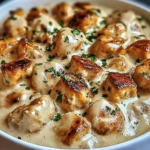
Tuscan Beef Casserole
- Total Time: 2 hours 50 minutes
- Yield: 6 generous portions 1x
Description
Tuscan Beef Casserole is your next cozy favorite. Try this rich, slow-cooked recipe full of flavor, herbs, and comfort.
Ingredients
2 lbs beef chuck, cubed
2 tbsp olive oil
1 large onion, diced
3 garlic cloves, minced
1 can crushed tomatoes (14 oz)
1 cup beef broth
1 cup red wine
2 carrots, chopped
1 tsp rosemary
1 tsp thyme
Salt and pepper to taste
Instructions
Sear the beef
Heat olive oil in a large Dutch oven over medium-high heat. Brown the beef in batches, about 3–4 minutes per side. Set aside.Sauté aromatics
In the same pot, add diced onion and cook until soft, about 5 minutes. Add garlic and stir for 30 seconds.Deglaze and build sauce
Add tomato paste, crushed tomatoes, wine, and beef broth. Stir in rosemary, thyme, and bay leaf. Bring to a simmer.Combine and simmer
Return the beef to the pot along with carrots. Season with salt and pepper. Cover and cook on low heat for 2.5 hours, stirring occasionally.Final taste check
Remove lid for the last 20 minutes to thicken the sauce slightly if desired. Taste and adjust seasoning before serving.
Serve and enjoy
Let the casserole rest for 10 minutes. Serve warm with rustic bread, creamy polenta, or mashed potatoes.
Notes
Freezer-friendly: Portion and freeze for up to 3 months. Thaw overnight in the fridge and reheat in a pot.
- Prep Time: 20 minutes
- Cook Time: 2 hours 30 minutes
- Category: Dinner / Oven Bake
- Method: Slow-cooked in a Dutch oven or heavy-bottomed pot
- Cuisine: American
Nutrition
- Calories: 420 kcal
